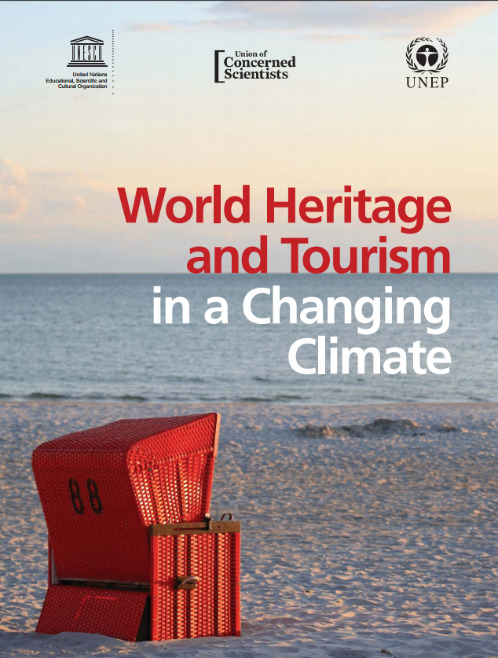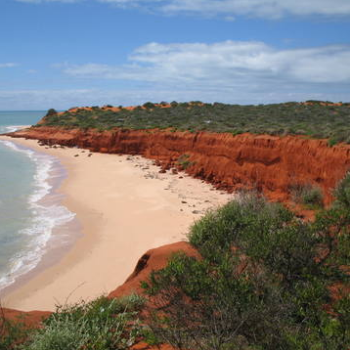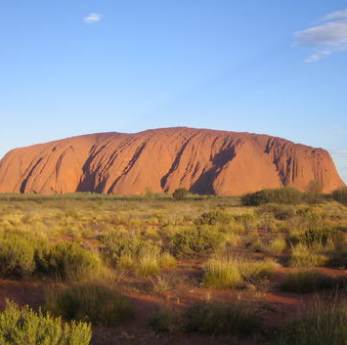The World Heritage Convention has been protecting cultural heritage across the globe since its inception in 1972. Today however, the changing climate and increased demands from tourism at World Heritage sites, represent new threats and an increasingly urgent need to protect and maintain cultural heritage for future generations.

What exactly is Cultural Heritage?
Cultural heritage can be considered all the tangible and intangible outcomes of the ways people and communities have developed a way of living, that is passed through generations. John Feather in 2006, defined cultural heritage as “a human creation intended to inform”.
Both the tangible and intangible aspects of any culture are so interwoven, you really can’t separate one from the other, with the tangible aspects of a culture representing the intangible.
The more tangible aspects can be broadly categorised into three main types;
- The built environment – buildings, towns, archaeological remains etc.
- The natural environment – landscapes, coastlines and shores, agricultural heritage.
- Artefacts – books, documents, objects and pictures etc.
These tangible aspects can also include all the parts of daily living such as cuisine, clothing, shelters, skills, ceremonies, religions and performances.
The meaning of these tangible aspects however, is informed by the intangible parts of that culture which they represent such as value systems, beliefs, traditions and lifestyles.
And these are then further expressed through various customs, practices, values, stories, performances and oral histories and artistic expressions. You certainly cannot preserve the intangible elements of a culture without also preserving the tangible representations of the meanings and values of that culture.

Cultural Heritage today
Cultures around the world however, are in danger of having vital elements lost as the impacts of increasing tourism and climate change begin to impact upon them. Action needs to be taken to ensure these cultures are preserved before too much is lost and cannot be recovered.
In May 2016, a joint report by the United Nations Environment Programme (UNEP), the United Nations Educational, Scientific and Cultural Organization (UNESCO) and the Union of Concerned Scientists (UCS) was issued. This report looks at the growing climate risks to World Heritage sites (both cultural and natural) and makes a number of recommendations on how the international community, governments, tourism operators and local communities should respond to the threats presented.
The report considered a huge range of available research materials of World Heritage sites, up to date climate science and a series of case studies to provide an overview of key threats presented by climate change and tourism, along with some recommendations for mitigation.
World Heritage and Tourism in a Changing Climate: Key Findings
Broadly, the report found that there is an urgent need to better understand, monitor and respond to climate change threats at World Heritage sites in order to preserve their unique values.
The direct impacts of climate change such as rising sea levels, higher temperatures, changes in habitats and increasing extreme weather events, present a risk to the cultural and natural heritage at World Heritage sites. Physically, they have the potential to change or degrade the site and its attributes, which may impact upon tourist movements to popular locations.
Based on a review of research and analysis of the case studies, the report details 7 general conclusions about the impacts of both climate change and tourism at World Heritage sites:
- The impacts of climate change can have a major negative effect on attractions of a site that draws tourists to want to visit. This has a follow on effect that reduces the potential development of sustainable tourism at the site and the economic benefits that result from it.
- There is a danger in the long term that some current World Heritage sites may need to be added to the List of World Heritage in Danger, or even de-listed due to the impacts of climate change affecting their overall value, integrity and authenticity.
- The sustainable and responsible management of tourism at World Heritage sites is vital. At sites where this is poorly managed, the effect of climate change impacts is likely to magnify any existing problems and increase the vulnerability of the site.
- Visitors to World Heritage sites could become concerned for the safety of the site due to impacts of climate change – particularly at sites where extreme weather events are predicted to increase in frequency and/or intensity.
- At the moment, the impacts of a changing climate on the natural and cultural heritage of these sites is not included or taken into account in tourism and development strategies or visitor management plans.
- For governments, tourism operators and local communities, climate change is not seen as an imminent or threat to their natural and cultural heritage. This has resulted in vast under-reporting in the assessment of climate vulnerability at World Heritage sites.
- There is a distinct lack of financial resources and expertise and training available to those who manage World Heritage sites in assessing how vulnerable the site may be to the impacts of climate change. This also results in a lack of capacity to plan for the development and implementation of any adaptation and resilience strategies.
Recommendations from the Report
It’s not all doom and gloom – the report also makes a number of recommendations for how to address the issues presented by climate change and tourism to World Heritage sites.
The recommendations can be summarised below into 8 key areas:
- The development and implementation of a range of policies, government frameworks and international guidelines that will ensure better reporting, measurement and assessment of the impacts of climate change and tourism on World Heritage sites, including identification of World Heritage sites that are most vulnerable to climate change.
- Governments and the tourism industry to take the lead in the development of actions and strategies to reduce greenhouse gas emissions, and therefore, the impacts of continued climate change.
- Inclusion of the impacts of climate change on site management, planning and tourism development at World Heritage sites.
- Engagement of indigenous and local communities in accessing the economic benefits of sustainable tourism at World Heritage sites.
- Accessing the cultural heritage of indigenous peoples and local communities to gather learnings and provide insights into how these people and places have responded to climate changes in the past.
- Science based reporting, research and evidence gathering of the effects of climate change.
- Tourism to take a leadership role by working with governments and stakeholders to create partnerships which promote sustainable tourism development and protection of natural and cultural heritage at World Heritage sites.
- Increase public and community awareness of the impacts of climate change on their natural and cultural heritage and the urgent need to act now rather than later.

What can you do?
As individuals there are a number of things we can do today, to help address the issues and impacts of climate change on our cultural heritage.
Firstly, we must all do our best to help reduce the emission of greenhouse gases into our climate – and help to curb the impacts of climate change. Choose low emission options wherever possible – and this can affect all areas of your life – from transport, energy use, buying local food produce to where you decide to holiday and how you get there.
Get involved in your local communities and learn more about the cultural heritage of your own area, look for ways to record this heritage for future generations.
Look at your own immediate environment and your local community and make sure you have disaster action plans in place if you are likely to be impacted by an extreme weather event. For example, if you live in a bush fire prone area, ensure your property is maintained to keep the risk of fire to a minimum and ensure you have a plan if disaster should strike. Consider how you will protect your own pieces of cultural heritage, and those of your local community, in the event of a disaster.
At the end of the day, our response to climate change, and the need to protect our cultural heritage is a responsibility we all share.
Give us a call on +618 9468 0338 or email enquiries@integratesustainability.com.au to explore how you can reduce your business’ impact and preserve our heritage for future generations.
